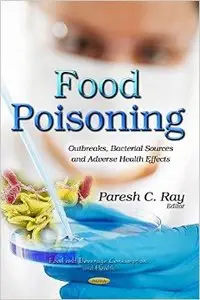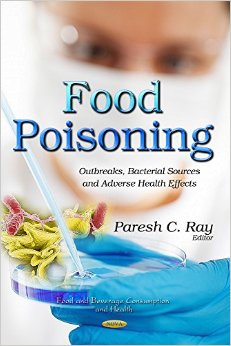Paresh Ray, "Food Poisoning: Outbreaks, Bacterial Sources and Adverse Health Effects"
English | ISBN: 1634631668 | 2015 | 291 pages | PDF | 15 MB
English | ISBN: 1634631668 | 2015 | 291 pages | PDF | 15 MB
Hygienic food and water are essential for healthy life. Outbreaks of pathogens and chemical food poisoning occur regularly in this world, which kills around 2.2 million people globally every year. Food recalls due to the presence of food-borne pathogens and toxic chemicals are a nightmare for world economical growth. Even in the 21st century, due to the biological diversity and low infection dose, it is a continual challenge to prevent infectious disease outbreaks due to harmful pathogens. To tackle these challenges, the source of food poisoning and adverse health effects are one of the fastest growing research and technology areas in the last twenty years. This book contains ten chapters covering basic science to possible device design which can have immense applications in our society.
This book is unique in its design and content, providing depth of science about different causes of food poisoning, possible health effects and the latest research about how to detect food-borne pathogens and toxic chemicals. This book provides a complete look at the sources of food toxicity, mechanisms of toxicity and how to prevent them. The first chapter discusses the sources, routes of human exposure, and underlying mechanisms leading to the toxicity of pyrrolizidine alkaloids present in herbal plants and herbal products. The next chapter summarizes bacteria-related food safety issues, mechanisms of antimicrobial properties of nanosilver and the use of nanosilver based antimicrobials. The third chapter deals with the use of laser-induced breakdown spectroscopy (LIBS) as a diagnostic tool for certain food safety applications. The fourth chapter focuses on the basic concepts and critical properties of graphene materials that are useful for pathogen sensing from food samples. The next chapter reports about recent developments on nano-materials based on optical and spectroscopic techniques for detection, and the diagnosis and destruction of food-borne pathogens. The sixth chapter deals with food spoilage by Pseudomonas and arsenic which affects fresh water sources of life for several millions people. The next chapter reviews the targeted magnetic separation, imaging, and the photothermal destruction of multiple drug resistant (MDR) Salmonella from food samples. The eighth chapter reports the fundamental concepts and novel properties of the nanomaterials that are useful for the detection and killing of the food-borne bacteria. The next chapter discusses about how the hybrid graphene oxide based SERS platform can be used for the ultra-sensitive melamine detection from contaminated milk products. The last chapter deals with various signs and symptoms derived from acute or chronic naphthalene poisoning. Authors of the chapters are the leaders in this area for their research activity and publications related to food poisoning.
I believe that the readers will be very pleased to read the wide range of state-of-the art techniques that are presently beyond our imagination, which can be used to find pathogen sources and to overcome adverse health effects



